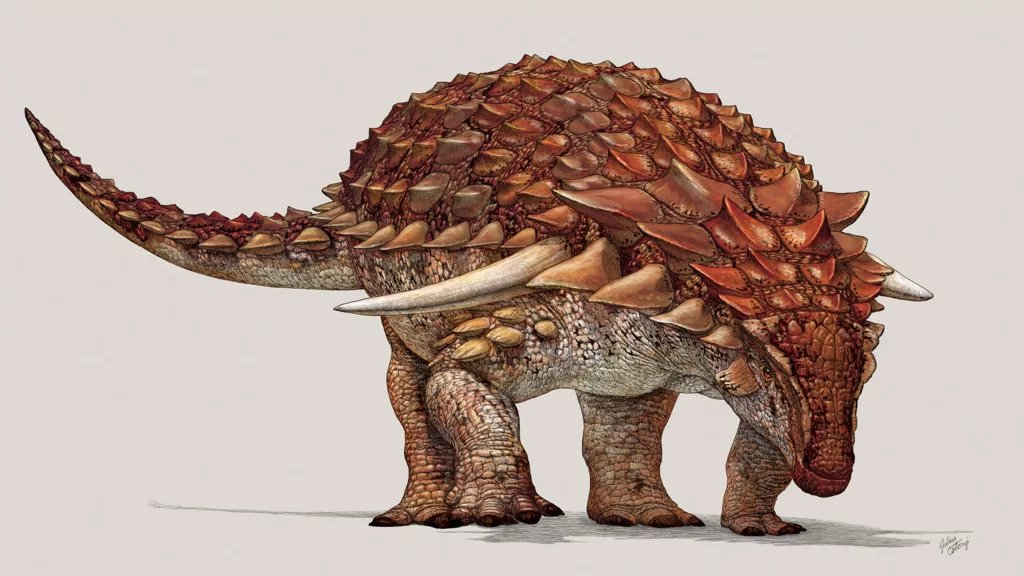How Do We Know What Color Dinosaurs Were?
No animals have experienced a more dramatic makeover in the past few decades than the nonavian dinosaurs. Animals we used to think had nothing but drab grey and brown scales are now believed to have flaunted feathers in bright colours and patterns.

So what colours were the dinosaurs, really? And how do we know?
One scientist we have to thank for the answers to both questions is Jakob Vinther, an associate professor in macroevolution at the University of Bristol in the United Kingdom. Ever since the first fossilized dinosaur feathers were reported in 1996, scientists had noticed round microscopic structures within them — structures that many had assumed were fossilized bacteria.
But as a doctoral student studying a completely different animal, Vinther realized that these structures might be something more.
“I was looking at fossilized ink in squid- and octopus-like ancestors,” Vinther told Live Science. “It was remarkably well preserved.
“You can take ink from a squid you bought down at the fishmonger and put it under an electron microscope, and you see perfect little round balls,” Vinther said. “And then when you take fossilized ink, it looks exactly the same: perfect little round balls.”
Those balls are melanosomes — microscopic blobs of melanin, the pigment that colours hair, skin, feathers and eyes across the animal kingdom. These round structures turned out to be the same ones being mistaken for bacteria in dinosaur feathers.
Scientists had largely believed that pigment couldn’t survive the fossilization process, but discoveries by scientists such as Vinther have shown not only that pigment survives but that it can tell us the actual colours of extinct animals. That’s because melanin comes not only in “perfect little round balls” but also in many different shapes, each of which produces a different colour.
“If you look at a person with black hair or a bird with black feathers, [those melanosomes] are sausage-shaped,” Vinther said. “Whereas if you’re ginger — if you’re a North American robin with a ginger chest or you’ve got ginger hair like Carrot Top — they’re shaped like little meatballs.
“So basically, you just look for sausages and meatballs, and then you can actually put colours on extinct animals,” Vinther said.
Big, fat melanosomes indicate grey or blue pigment. Melanosomes that are long and skinny, flat or hollow are a sign of iridescence.
“That’s actually generated by ordering melanin in a specific way inside the feather in order to create structures that can interact with light,” Vinther said. The flat or hollow shape of the individual melanosomes helps them fit together in a way that creates the metallic sheen of iridescence.



Once you know the shape of the melanosomes in a fossil, you can learn all sorts of things about the animal. For example, some dinosaurs with fearsome reputations were incredibly showy.
“Many of the close relatives of Velociraptor — you know, that was chasing the kids around in the kitchen [in “Jurassic Park”]?” Vinther said. “First of all, that was covered in feathers. It was really bird-like, not like this naked thing that we see there. But furthermore, most of the relatives that we looked at that were close to it, were iridescent. So they would have had a metallic sheen, like hummingbirds or peacocks.”
Other dinosaurs had complex camouflage. The first dinosaur Vinther ever studied was a small, bird-like animal called Anchiornis. Based on the melanosomes, Vinther and his team concluded that it had a grey body, white wing feathers with black splotches at the tips and a red crown like a woodpecker’s.
Another dinosaur called Sinosauropteryx — the first dinosaur to be discovered with feathers — had a striped tail and a bandit mask, sort of like a raccoon. It also had countershading, a kind of natural camouflage in which the parts of an animal that would usually be in shadow have a lighter pigment than the parts that would usually be in sunlight. A classic example of this is the white-tailed deer (Odocoileus virginianus), which has a white belly and a brown backside.
This colouring tells scientists about the creatures’ habitat; if the countershading is sharp and high on the body, as it was in Sinosauropteryx, the animal probably lives out in the open. Countershading that’s more gradual and low on the body suggests a forest environment where the light is more diffuse.
Camouflage also distinguishes predators from prey. The huge armoured dinosaur Borealopelta mark Mitchell seems like it would have had zero predators, but its countershading suggests otherwise.
“If you look at large animals today, they don’t have any colour patterns, like elephants [and] rhinos,” Vinther said. “And that’s because nobody messes with them.”
“So, based on the fact that this animal was covered in armour, really huge, but it was counter-shaded tells us that ‘Jurassic Park’ would have been scary,” Vinther said. “You’re still vulnerable even if you’re that big and that armoured.”
